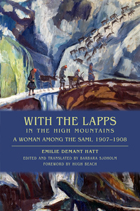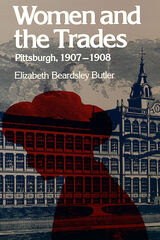2 books about 1907 - 1908

With the Lapps in the High Mountains
A Woman among the Sami, 1907–1908
Emilie Demant Hatt; Edited and translated by Barbara Sjoholm; Foreword by Hugh Beach
University of Wisconsin Press, 2013
With the Lapps in the High Mountains is an entrancing true account, a classic of travel literature, and a work that deserves wider recognition as an early contribution to ethnographic writing. Published in 1913 and available here in its first English translation, it is the narrative of Emilie Demant Hatt's nine-month stay in the tent of a Sami family in northern Sweden in 1907–8 and her participation in a dramatic reindeer migration over snow-packed mountains to Norway with another Sami community in 1908. A single woman in her thirties, Demant Hatt immersed herself in the Sami language and culture. She writes vividly of daily life, women's work, children's play, and the care of reindeer herds in Lapland a century ago.
While still an art student in Copenhagen in 1904, Demant Hatt had taken a vacation trip to northern Sweden, where she chanced to meet Sami wolf hunter Johan Turi. His dream of writing a book about his people sparked her interest in the culture, and she began to study the Sami language at the University of Copenhagen. Though not formally trained as an ethnographer, she had an eye for detail. The journals, photographs, sketches, and paintings she made during her travels with the Sami enriched her eventual book, and in With the Lapps in the High Mountains she memorably portrays people, dogs, reindeer, and the beauty of the landscape above the Arctic Circle. This English-language edition also includes photographs by Demant Hatt, an introduction by translator Barbara Sjoholm, and a foreword by Hugh Beach, author of A Year in Lapland: Guest of the Reindeer Herders.
[more]

Women and the Trades
Pittsburgh, 1907–1908
Elizabeth Beardsley Butler
University of Pittsburgh Press, 1984
Women and the Trades has long been regarded as a masterwork in the field of social investigation. Originally published in 1909, it was one of six volumes of the path breaking Pittsburgh Survey, the first attempt in the United States to study, systematically and comprehensively, life and labor in one industrial city. No other book documents so precisely the many technological and organizational changes that transformed women's wage work in the early 1900s.
Despite Pittsburgh's image as a male-oriented steel town, many women also worked for a living-rolling cigars, canning pickles, or clerking in stores. The combination of manufacturing, distribution, and communication services made the city of national economic developments.
What Butler found in her visits to countless workplaces did not flatter the city, its employers, or its wage earners. With few exceptions, labor unions served the interests of skilled males. Women's jobs were rigidly segregated, low paying, usually seasonal, and always insecure. Ethnic distinctions erected powerful barriers between different groups of women, as did status hierarchies based on job function.
Professor Maurine Weiner Greenwald's introduction provides biographical sketches of Butler and photographer Lewis Hine and examines the validity of Butler's assumptions and findings, especially with regard to protective legislation, women worker's “passivity,” and working-class family strategies.
Despite Pittsburgh's image as a male-oriented steel town, many women also worked for a living-rolling cigars, canning pickles, or clerking in stores. The combination of manufacturing, distribution, and communication services made the city of national economic developments.
What Butler found in her visits to countless workplaces did not flatter the city, its employers, or its wage earners. With few exceptions, labor unions served the interests of skilled males. Women's jobs were rigidly segregated, low paying, usually seasonal, and always insecure. Ethnic distinctions erected powerful barriers between different groups of women, as did status hierarchies based on job function.
Professor Maurine Weiner Greenwald's introduction provides biographical sketches of Butler and photographer Lewis Hine and examines the validity of Butler's assumptions and findings, especially with regard to protective legislation, women worker's “passivity,” and working-class family strategies.
[more]
READERS
Browse our collection.
PUBLISHERS
See BiblioVault's publisher services.
STUDENT SERVICES
Files for college accessibility offices.
UChicago Accessibility Resources
home | accessibility | search | about | contact us
BiblioVault ® 2001 - 2024
The University of Chicago Press









